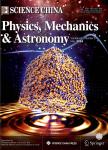The influence of target material and thickness on proton energy and angular distribution
The influence of target material and thickness on proton energy and angular distribution作者机构:Beijing National Laboratory for Condensed Matter PhysicsInstitute of PhysicsChinese Academy of Sciences State Key Laboratory of Nuclear Physics and TechnologyInstitute of Heavy Ion PhysicsPeking University Key Laboratory for Laser Plasmas(Ministry of Education) and Department of PhysicsShanghai Jiao Tong University
出 版 物:《Science China(Physics,Mechanics & Astronomy)》 (中国科学:物理学、力学、天文学(英文版))
年 卷 期:2013年第56卷第2期
页 面:457-461页
核心收录:
学科分类:07[理学] 070205[理学-凝聚态物理] 0702[理学-物理学]
基 金:supported by the National Natural Science Foundation of China (Grant Nos. 10935002,10925421,and 10974250) the National Basic Research Program of China (973 Program,Grant No.2007CB815102)
主 题:laser-driven proton acceleration
摘 要:The paper has studied the influence of target material and thickness on energy and angular distributions of the protons generated by using an 800 rim, 60 fs, 0.24 J laser pulse to irradiate solid target foils. The results show that the initial density and thickness of the targets will affect the formation of the acceleration sheath fields in the target normal direction. For the same target thickness, using lower density target materials can obtain a higher proton maximum energy. However, lower density targets tend to be deformed due to the shock waves launched by the laser pulses, making the proton spatial distribution more divergent.



